Tipu Sultan
For the mosque in Calcutta, India, see Tipu Sultan Mosque. For the ships of the Pakistan Navy, see PNS Tippu Sultan.
| Tipu Sultan ٹیپو سلطان ಟಿಪ್ಪು ಸುಲ್ತಾನ್ | |||||
|---|---|---|---|---|---|
| Badshah Nasib ad-Dawlah Fath Ali Khan Bahadur | |||||
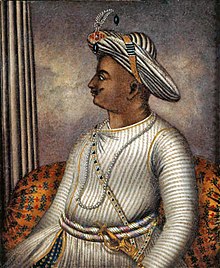 | |||||
| Sultan of Mysore | |||||
| Reign | 29 December 1782 – 4 May 1799 | ||||
| Coronation | 29 December 1782 | ||||
| Predecessor | Hyder Ali | ||||
| Successor | Krishnaraja Wodeyar III | ||||
| Born | 20 November 1750[1] Devanahalli, present-dayBangalore, Karnataka | ||||
| Died | 4 May 1799 (aged 48) Srirangapatna, present-day Karnataka | ||||
| Burial | Srirangapatna, present-day Karnataka 12°24′36″N 76°42′50″E | ||||
| |||||
| House | Mysore | ||||
| Father | Hyder Ali Khan | ||||
| Mother | Fatima Fakhr-un-Nisa | ||||
| Religion | Islam | ||||
Tipu Sultan ( Urdu:ٹیپو سلطان, Kannada : ಟಿಪ್ಪು ಸುಲ್ತಾನ್ ) (20 November 1750 – 4 May 1799), (Sultan Fateh Ali Khan Shahab[2]) also known as the Tiger of Mysore, and Tipu Sahib,[3] was a ruler of the Kingdom of Mysore. He was the eldest son of Sultan Hyder Ali of Mysore.[4] Tipu introduced a number of administrative innovations during his rule, including his coinage, a new Mauludilunisolar calendar,[5] and a new land revenue system which initiated the growth of Mysore silk industry.[6] Tipu expanded the iron-cased Mysorean rockets and wrote the military manual Fathul Mujahidin, considered a pioneer in the use ofrocket artillery.[7] He deployed the rockets against advances of British forces and their allies in their 1792 and 1799 Siege of Srirangapatna.
Napoleon, the French commander-in-chief who later became emperor, sought an alliance with Tipu. In alliance with the French in their struggle with the British, and in Mysore's struggles with other surrounding powers, both Tipu and his father used their French trained army[8] against the Marathas, Sira, and rulers of Malabar, Kodagu, Bednore, Carnatic, and Travancore. During Tipu's childhood, his father rose to take power in Mysore, and upon his father's death in 1782, Tipu succeeded to a large kingdom bordered by the Krishna River in the north, the Eastern Ghats in the east, and the Arabian Sea in the west.[9] He won important victories against the British in the Second Anglo-Mysore War, and negotiated the 1784 Treaty of Mangalore with them after his father Hyder Ali suddenly died from cancer in December 1782 during the Second Anglo-Mysore War.
Tipu engaged in expansionist attacks against his neighbours. He remained an implacable enemy of the British East India Company, bringing them into renewed conflict with his attack on British-allied Travancore in 1789. In theThird Anglo-Mysore War, Tipu was forced into the humiliating Treaty of Seringapatam, losing a number of previously conquered territories, including Malabar and Mangalore. He sent emissaries to foreign states, including theOttoman Turkey, Afghanistan, and France, in an attempt to rally opposition to the British. In the Fourth Anglo-Mysore War, the forces of the British East India Company, supported by the Marathas and the Nizam of Hyderabad, defeated Tipu and he was killed on 4 May 1799 while defending his fort of Srirangapatna. Tipu Sultan's image in India is complicated where he is regarded both as a secular ruler who fought against British colonialism as well as an anti-Hindu tyrant.
Contents
[hide]Early years of Tipu Sultan
Childhood
Tipu Sultan was born on 20 November 1750 (Friday, 20th Dhu al-Hijjah, 1163 AH) atDevanahalli,[1] in present-day Bengaluru Rural district, about 33 km (21 mi) north ofBengaluru city. He was named "Tipu Sultan" after the saint Tipu Mastan Aulia ofArcot. Tipu was also called "Fath Ali" after his grandfather Fatah Muhammad. Tipu was born at Devanhalli, the son of Haidar Ali. Himself illiterate, Haidar was very particular in giving his eldest son a prince's education and a very early exposure to military and political affairs. From the age of 17 Tipu was given independent charge of important diplomatic and military missions. He was his father's right arm in the wars from which Haidar emerged as the most powerful ruler of southern India.
Tipu's father, Hyder Ali, was a military officer in service to the Kingdom of Mysore; he rapidly rose in power, and became the de facto ruler of Mysore in 1761. Hyder himself claimed descent from the Quraysh tribe of Arabs[citation needed], the tribe of the Islamic prophet, Muhammad. Hyder's father, Fatah Muhammad, was born inKolar, and served as a commander of 50 men in the bamboo rocket artillery (mainly used for signalling) in the army of the Nawab of Carnatic. Fatah Muhammad eventually entered the service of the Wodeyar Rajas of the Kingdom of Mysore. Tipu's mother Fatima Fakhr-un-Nisa was the daughter of Mir Muin-ud-Din, the governor of the fort of Kadapa. Hyder Ali appointed able teachers to give Tipu an early education in subjects like Hindustani language (Hindi-Urdu), Persian, Arabic, Kannada, Quran, Islamic jurisprudence, riding, shooting and fencing. Tipu's wife was Sindh Sultan and grandson was Sahib sindh Sultan.[1]
Early military service
Tipu Sultan was instructed in military tactics by French officers in the employment of his father. At age 15, he accompanied his father against the British in the First Mysore War in 1766. He commanded a corps of cavalry in the invasion of Carnaticin 1767 at age 16. He also distinguished himself in the First Anglo-Maratha War of 1775–1779.[11]
Alexander Beatson, who published a volume on the Fourth Mysore War entitledView of the Origin and Conduct of the War with Tippoo Sultaun, described Tipu Sultan as follows: "His stature was about five feet eight inches; he had a short neck, square shoulders, and was rather corpulent: his limbs were small, particularly his feet and hands; he had large full eyes, small arched eyebrows, and an aquiline nose; his complexion was fair, and the general expression of his countenance, not void of dignity".[12]
Second Anglo-Mysore War
Main article: Second Anglo-Mysore War
In 1779, the British captured the French-controlled port of Mahé, which Tipu had placed under his protection, providing some troops for its defence. In response, Hyder launched an invasion of the Carnatic, with the aim of driving the British out of Madras.[13] During this campaign in September 1780, Tipu Sultan was dispatched by Hyder Ali with 10,000 men and 18 guns to intercept Colonel Baillie who was on his way to join Sir Hector Munro. In the Battle of Pollilur, Tipu decisively defeated Baillie. Out of 360 Europeans, about 200 were captured alive, and the sepoys, who were about 3800 men, suffered very high casualties. Munro was moving south with a separate force to join Baillie, but on hearing the news of the defeat he was forced to retreat to Madras, abandoning his artillery in a water tank at Kanchipuram.[14]
Tipu Sultan defeated Colonel Braithwaite at Annagudi near Tanjore on 18 February 1782. Braithwaite's forces, consisting of 100 Europeans, 300 cavalry, 1400 sepoysand 10 field pieces, was the standard size of the colonial armies. Tipu Sultan seized all the guns and took the entire detachment prisoner. In December 1781 Tipu Sultan successfully seized Chittur from the British. Tipu Sultan had thus gained sufficient military experience by the time Hyder Ali died on Friday, 6 December 1782 – some historians put it at 2 or 3 days later or before, (Hijri date being 1 Muharram, 1197 as per some records in Persian – there may be a difference of 1 to 3 days due to the Lunar Calendar). Tipu Sultan realised that the British were a new kind of threat in India. He became the ruler of Mysore on Sunday, 22 December 1782 (The inscriptions in some of Tipu's regalia showing it as 20 Muharram, 1197 Hijri – Sunday), in a simple coronation ceremony. He then worked to check the advances of the British by making alliances with the Marathas and the Mughals.
The Second Mysore War came to an end with the 1784 Treaty of Mangalore. It was the last occasion when an Indian king dictated terms to the British, and the treaty is a prestigious document in the history of India.[citation needed]
Tanjore abductions
The war is also remembered for alleged excesses committed by Hyder Ali and Tipu Sultan in Tanjore.[15] During the period of occupation which lasted six months, Hyder Ali and Tipu Sultan are believed to have impoverished the country, destroying crops and cattle.[15] As late as 1785, the Dutch missionary Christian Friedrich Schwarz describes Tipu's alleged abduction of 12,000 children from the region.[15] The economic output of Tanjore is estimated to have fallen by 90% between 1780 and 1782.[16] The ravages of Hyder and Tipu were followed by alleged expeditions of plunder launched by the Kallars. The economic devastation wrought by these attacks was so severe that Tanjore's economy did not recover until the start of the 19th century; the era is referred to in local folklore as the Hyderakalam.[15]
Ruler of the Mysore State
Muhammad Falak Ali taught Tipu how to fight. While leading a predominantly Hindu country, Tipu remained strong in his Muslim faith, going daily to say his prayers and paying special attention to mosques in the area.[17]
During his rule, he completed the project of Lal Bagh started by his father Hyder Ali, and built roads, public buildings, and ports in his kingdom. His dominion extended throughout North Bangalore including the Nandi Hills and Chickballapur. His trade extended to countries such as Sri Lanka, Oman, Durrani Afghanistan, France,Ottoman Turkey and Iran. Under his leadership, the Mysore army proved to be a school of military science to Indian princes. The serious blows that Tipu Sultan inflicted on the British in the First and Second Mysore Wars affected their reputation as an invincible power.
Dr APJ Abdul Kalam, the former President of India, in his Tipu Sultan Shaheed Memorial Lecture in Bangalore (30 November 1991), called Tipu Sultan the innovator of the world's first war rocket. Two of these rockets, captured by the British at Srirangapatna, are displayed in the Royal Artillery Museum in London. According to historian Dr Dulari Qureshi Tipu Sultan was a fierce warrior king and was so quick in his movement that it seemed to the enemy that he was fighting on many fronts at the same time.[18] Tipu managed to subdue all the petty kingdoms in the south. He defeated the Nizams and was also one of the few Indian rulers to have defeated British armies. He is said to have started a new coinage, calendar, and a new system of weights and measures mainly based on the methods introduced by French technicians. He was well versed in Kannada, Urdu,Persian, Arabic, English and French.[citation needed] Tipu was supposed to become a Sufi, but his father Hyder Ali insisted he become a capable soldier and leader.
Foreign relations
Both Hyder Ali ismaael and Tipu Sultan were independent rulers of Mysore, but claimed some degree of loyalty to the Mughal EmperorShah Alam II. Both of them are known to have maintained correspondence with the Mughal emperor. Unlike the Nawab of Carnatic, neither owed any allegiance to the Nizam of Hyderabad and often instead chose direct contact and relations with the Mughal emperor.[19]
Immediately after his coronation, Tipu Sultan sought the investiture of the Mughal emperor. Nizam Ali Khan, the Nizam of Hyderabad, clearly expressed his hostility by dissuading the Mughal emperor and laying false claims onto Mysore. Disheartened but not disappointed, Tipu Sultan began to establish contacts with other Muslim rulers of that period.[20]
After the eunuch Ghulam Qadir had Shah Alam II blinded on 10 August 1788, Tipu Sultan is believed to have broken into tears.[21] After facing substantial threats from the Marathas, Tipu Sultan began to correspond with Zaman Shah Durrani, the ruler of the Afghan Durrani Empire, so they could defeat the British and Marathas.[22] Initially, Zaman Shah agreed to help Tipu, but the Persian attack on Afghanistan's Western border diverted its forces, and hence no help could be provided to Tipu.
In the year 1787, Tipu Sultan sent an embassy to the Ottoman capital Istanbul, to the Ottoman Sultan Abdul Hamid Irequesting urgent assistance against the British East India Company and had proposed an offensive and defensive consortium. Tipu Sultan requested the Ottoman Sultan to send him troops and military experts. Furthermore, Tipu Sultan also requested permission from the Ottomans to contribute to the maintenance of the Islamic shrines in Mecca, Medina,Najaf and Karbala. However, the Ottomans were themselves at crisis and still recuperating from the devastating Austro-Ottoman War and a new conflict with the Russian Empire had begun, for which Ottoman Turkey needed British alliance to keep off the Russians, hence it could not risk being hostile to the British in the Indian theatre. Due to the Ottoman-inability to organise a fleet in the Indian Ocean, Tipu Sultan's ambassadors returned home only with gifts from their Ottoman allies, this event caused his defeat and loss of much territory by the year 1792. Nevertheless, Tipu Sultan's correspondence with the Ottoman Turkish Empire and particularly it's new Sultan Selim III continued till his final battle in the year 1799.[23]
Tipu sought support from the French, who had been his traditional allies, aimed at driving his main rivals, the British East India Company, out of the subcontinent. But back in France, the French revolution had broken out, the ruling Bourbon family was executed and the country was in chaos, hence the French did not support him. Napoleon, while still not the Emperor of France, sought an alliance with Tipu Sultan. Napoleon came as far as conquering Egypt in an attempt to link with Tipu Sultan against the British, their common enemy. In February 1798, Napoleon wrote a letter to Tipu Sultan appreciating his efforts of resisting the British annexation and plans, but this letter never reached Tipu and was seized by a British spy in Muscat. The idea of a possible Tipu-Napoleon alliance alarmed the British Governor General Sir Richard Wellesley (also known as Lord Wellesley) so much that he immediately started large scale preparations for a final battle against Tipu Sultan.
Both Tipu Sultan and Emperor Napoleon Bonaparte were defeated by the same person. In the Final siege and fall of Srirangapatna in 1799, General Arthur Wellesley led the British army into the City after the fall of Tipu Sultan. Arthur was the younger brother of Richard Wellesley, and was one of the British Generals in theFourth Mysore War. Several years later in Europe, the same Arthur Wellesley, now the Duke of Wellington, led the armies of the Seventh Coalition and defeated the Imperial French army led by Napoleon Bonaparte in the Battle of Waterloo in 1815.
Like his father before him, Tipu Sultan maintained many embassies and made several contacts with Mohammad Ali Khan, ruler of the Zand Dynasty in Persia. Tipu Sultan also maintained correspondence with Hamad bin Said, the ruler of theSultanate of Oman.[24]
Regional interests and clever British diplomacy left Tipu with more enemies and betrayers, but no allies when he needed them the most – the final showdown with the British in the Fourth Mysore War.
War against the Maratha Confederacy
The Maratha Empire, under its new Peshwa Madhavrao I, regained most of Indian subcontinent, twice defeating Tipu's father, who was forced to accept Maratha Empire as the supreme power in 1764 and then in 1767. In 1767 Maratha Peshwa Madhavrao defeated both Hyder Ali and Tipu Sultan and entered Srirangapatna, the capital of Mysore. Hyder Ali accepted the authority of Madhavrao who gave him the title of Nawab of Mysore.[25] However Tipu Sultan wanted to escape from the treaty of Marathas and therefore tried to take some Maratha forts in southern India. This brought Tipu in direct conflict with the Marathas, who sent an army towards Mysore under leadership of General Nana Phadnavis. The Marathas took many forts of Tipu Sultan in the Mysore region Badami, Kittur, and Gajendragad in June 1786. By the victory in this war, the border of the Maratha territory was extended to the Tungabhadra river. This forced Tipu to open negotiations with the Maratha leadership. He sent two of his agents to the Maratha capital of Pune. The deal that was finalised resulted in the Marathas recovering their territories which had been invaded by Mysore. Furthermore, the Nizam of Hyderabad received Adoni and Mysore was obligated to pay 4.8 million rupees as a war cost to the Marathas, and an annual tribute of 1.2 million rupees; in return the Marathas recognised the rule of Tipu in the Mysore region.[26]
The Malabar Invasion of Sultanate of Mysore (1766–1790)
In 1766, when Tipu Sultan was just 15 years old, he got the chance to apply his military training in battle for the first time, when he accompanied his father on an invasion of Malabar. After the incident- Siege of Tellicherry in Thalassery in NorthMalabar,[27] Hyder Ali started losing his territories in Malabar. Tipu came from Mysore to reinstate the authority over Malabar. After the Battle of the Nedumkotta (1789), due to the monsoon flood, the stiff resistance of the Travancore forces and news about the attack of British in Srirangapatnam he went back.[28][29]
Third Anglo-Mysore War
Main article: Third Anglo-Mysore War
In 1789, Tipu Sultan disputed the acquisition by Dharma Raja of Travancore of twoDutch-held fortresses in Cochin. In December 1789 he massed troops atCoimbatore, and on 28 December made an attack on the lines of Travancore, knowing that Travancore was (according to the Treaty of Mangalore) an ally of theBritish East India Company. On account of the staunch resistance by the Travancore army, Tipu was unable to break through the Tranvancore lines and the Maharajah of Travancore appealed to the East India Company for help. In response, Lord Cornwallis mobilised company and British military forces, and formed alliances with the Marathas and the Nizam of Hyderabad to oppose Tipu. In 1790 the company forces advanced, taking control of much of the Coimbatore district. Tipu counterattacked, regaining much of the territory, although the British continued to hold Coimbatore itself. He then descended into the Carnatic, eventually reaching Pondicherry, where he attempted without success to draw the French into the conflict.
In 1791 his opponents advanced on all fronts, with the main British force under Cornwallis taking Bangalore and threatening Srirangapatna. Tipu harassed the British supply and communication and embarked on a "scorched earth" policy of denying local resources to the invaders. In this last effort he was successful, as the lack of provisions forced Cornwallis to withdraw to Bangalore rather than attempt a siege of Srirangapatna. Following the withdrawal, Tipu sent forces to Coimbatore, which they retook after a lengthy siege.
The 1792 campaign was a failure for Tipu. The allied army was well-supplied, and Tipu was unable to prevent the junction of forces from Bangalore and Bombay before Srirangapatna. After about two weeks of siege, Tipu opened negotiations for terms of surrender. In the ensuing treaty, he was forced to cede half his territories to the allies,[11] and deliver two of his sons as hostages until he paid in full three crores and thirty lakhs rupees fixed as war indemnity to the British for the campaign against him. He paid the amount in two instalments and got back his sons from Madras.
Napoleon's attempt at a junction
Main article: Franco-Indian alliances
In 1794, with the support of French Republican officers, Tipu helped found theJacobin Club of Mysore for 'framing laws comfortable with the laws of the Republic' He planted a Liberty Tree and declared himself Citizen Tipoo.[31]
One of the motivations of Napoleon's Invasion of Egypt was to establish a junction with India against the British. Bonaparte wished to establish a French presence in the Middle East, with the ultimate dream of linking with Tippoo Sahib.[32] Napoleon assured to the French Directory that "as soon as he had conquered Egypt, he will establish relations with the Indian princes and, together with them, attack the English in their possessions."[33] According to a 13 February 1798 report byTalleyrand: "Having occupied and fortified Egypt, we shall send a force of 15,000 men from Suez to India, to join the forces of Tipu-Sahib and drive away the English."[33] Napoleon was unsuccessful in this strategy, losing the Siege of Acre in 1799, and at the Battle of Abukir in 1801.[34]
| “ | Although I never supposed that he (Napoleon) possessed, allowing for some difference of education, the liberality of conduct and political views which were sometimes exhibited by old Hyder Ali, yet I did think he might have shown the same resolved and dogged spirit of resolution which induced Tipu Sahib to die manfully upon the breach of his capital city with his sabre clenched in his hand. | ” |
| — Sir Walter Scott, commenting on the abdication of Napoleon Bonaparte in 1814 | ||
Death
Fourth Anglo-Mysore War
Main article: Fourth Anglo-Mysore War
After Horatio Nelson had defeated François-Paul Brueys D'Aigalliers at the Battle of the Nile in Egypt in 1798, three armies, one fromBombay, and two British (one of which included Arthur Wellesley), marched into Mysore in 1799 and besieged the capitalSrirangapatna in the Fourth Mysore War.[35]
There were over 26,000 soldiers of the British East India Company comprising about 4000 Europeans and the rest Indians. A column was supplied by the Nizam of Hyderabad consisting of ten battalions and over 16,000 cavalry, and many soldiers were sent by the Marathas. Thus the soldiers in the British force numbered over 50,000 soldiers whereas Tipu Sultan had only about 30,000 soldiers. The British broke throughthe city walls, French Military advisers advised Tipu Sultan[citation needed] to escape from secret passages and live to fight another day but to their astonishment Tipu replied "One day of life as a Tiger is far better than thousand years of living as a Sheep".[citation needed] Tipu Sultan died defending his capital on 4 May. When the fallen Tipu was identified, Wellesley felt his pulse and confirmed that he was dead. Next to him, underneath his palankeen, was one of his most confidential servants, Rajah Cawn. Rajah was able to identify Tipu for the soldiers. Tipu Sultan was killed at the Hoally (Diddy) Gateway, which was located 300 yards (270 m) from the N.E. Angle of the Srirangapatna Fort.[36] Tipu was buried the next afternoon, at the Gumaz, next to the grave of his father. In the midst of his burial, a great storm struck, with massive winds and rains. As Lieutenant Richard Bayly of the British 12th regiment wrote,
Immediately after the death of Tipu Sultan many members of the British East India Company believed that Umdat Ul-Umra, the Nawab of Carnatic, secretly provided assistance to Tipu Sultan during the war and immediately sought his deposition after the year 1799.
Leadership, policy, and innovations
Tipu introduced a new calendar, new coinage, and seven new government departments, during his reign, and made military innovations in the use of rocketry.
Mysorean rockets
Main article: Mysorean rockets
Tipu Sultan's father had expanded on Mysore's use of rocketry, making critical innovations in the rockets themselves and the military logistics of their use. He deployed as many as 1,200 specialised troops in his army to operate rocket launchers. These men were skilled in operating the weapons and were trained to launch their rockets at an angle calculated from the diameter of the cylinder and the distance to the target. The rockets had blades mounted on them, and could wreak significant damage when fired en masse against a large army. Tipu greatly expanded the use of rockets after Hyder's death, deploying as many as 5,000 rocketeers at a time. The rockets deployed by Tipu during the Battle of Pollilur were much more advanced than those the British East India Company had previously seen, chiefly because of the use of iron tubes for holding the propellant; this enabled higher thrust and longer range for the missiles (up to 2 km range).[7]
British accounts describe the use of the rockets during the third and fourth wars. During the climactic battle at Srirangapatna in 1799, British shells struck a magazine containing rockets, causing it to explode and send a towering cloud of black smoke with cascades of exploding white light rising up from the battlements. After Tipu's defeat in the fourth war the British captured a number of the Mysorean rockets. These became influential in British rocket development, inspiring the Congreve rocket, which was soon put into use in the Napoleonic Wars.[7]
In 1786 Tipu Sultan, again following the lead of his father, decided to build a navy consisting of 20 battleships of 72 cannons and 20 frigates of 62 cannons. In the year 1790 he appointed Kamaluddin as his Mir Bahar and established massive dockyards at Jamalabad and Majidabad. Tipu Sultan's board of admiralty consisted of 11 commanders in service of a Mir Yam. A Mir Yam led 30 admirals and each one of them had two ships. By the year 1789 most of Tipu Sultan's ships hadcopper-bottoms, an idea that increased the longevity of the ships and was introduced to Tipu by Admiral Suffren.[38]
Religious policy
As a Muslim ruler in a largely Hindu domain, Tipu Sultan faced problems in establishing the legitimacy of his rule, and in reconciling his desire to be seen as a devout Islamic ruler with the need to be pragmatic to avoid antagonising the majority of his subjects. His religious legacy has become a source of considerable controversy in the subcontinent. Some groups proclaim him a great warrior for the faith or Ghazi, while others revile him as a bigot who massacred Hindus.[39][40][41]
In 1780, he declared himself to be the Badshah or Emperor of Mysore, and struck coinage in his own name without reference to the reigning Mughal Emperor Shah Alam II. H. D. Sharma writes that, in his correspondence with other Islamic rulers such as Zaman Shah of the Afghan Durrani Empire, Tipu Sultan used this title and declared that he intended to establish an Islamic empire in the entire country, along the lines of the Mughal Empire, which was at its decline during the period in question. He even invited Zaman Shah to invade India to help achieve this mission.[42] His alliance with the French was supposedly aimed at achieving this goal by driving his main rivals, the British, out of the subcontinent. During the early period of Tipu Sultan's reign in particular, he appears to have been as strict as his father against any non-Muslim accused of collaboration with the British East India Company or the Maratha.[41][unreliable source?]
Attitude towards Hindus
Conversions of Hindus outside Mysore to Islam
Main article: Captivity of Kodavas at Seringapatam
Kodagu (Coorg)
The battles between Kodavas and Tippu Sultan is one of the most bitter rivalries in South India. There were repeated attempts to capture Kodagu by the sultan and his father Hyder Ali before him. The primary reason for sultan's interest in Kodagu because annexing Kodagu would provide access to Mangalore port. The Kodavas knew their lands and mountains very well which made them excellent at guerrilla warfare. Kodavas were outnumbered 3 to 1 in most of Tippu's attempts to annex Kodagu but they managed to beat back Tippu most of the times by drawing his army towards hilly regions of their land. On few occasions Tippu's army managed to reach Madikeri(Capital of Kodagu) but the Kodavas always ambushed the contingent left behind by Tippu. Kodavas refusal to bow to the sultan was primarily because throughout their history they enjoyed independence, though there were Rajahs ruling over them, governance of the land mainly rested with Kodavas. After capturing Kodagu on another occasion, Tippu proclaimed, "If you ever dare to ambush my men again, I will honor everyone of you with Islam", undeterred, the resilient Kodavas ambushed his men yet again and drove them back to Mysore. By now Tippu realized conventional warfare would never yield him Kodagu. He devised a plan to annex Kodagu by offering his friendship. His offer of friendship was welcomed by Kodavas as the battles with the Sultan over the years had cost them dearly. When Kodavas welcomed Sultan to their land in the name of friendship, the Sultan and his men attacked them and took thousands as prisoners. Tipu got Runmust Khan, the Nawab of Kurnool, to launch a surprise attack upon the KodavaHindus who were besieged by the invading Muslim army. 500 were killed and over 40,000 Kodavas fled to the woods and concealed themselves in the mountains.[43]Thousands of Kodavas were seized along with the Raja and held captive at Seringapatam. Aguably, they were thought to be subjected to forcible conversions toIslam, death, and torture.[44]
In Seringapatam, the young men were all forcibly circumcised and incorporated into the Ahmedy Corps, and were formed into eight Risalas or regiments.[43] The actual number of Kodavas that were captured in the operation is unclear. The British administrator Mark Wilks gives it as 70,000, Historian Lewis Rice arrives at the figure of 85,000, while Mir Kirmani's score for the Coorg campaign is 80,000 men, women and child prisoners.[43]
Mohibbul Hasan, Prof. Sheikh Ali, and other historians cast great doubt on the scale of the deportations and forced conversions in Coorg in particular. Hassan says that it is difficult to estimate the real number of Coorgs captured by Tipu.[45]
In a letter to Runmust Khan, Tipu himself stated:[46]
Kasaragod (near Mangalore)
Tipu sent a letter on 19 January 1790 to the Governor of Bekal (near Kasaragod), Budruz Zuman Khan. It says:
Malabar
Main article: Captivity of Nairs at Seringapatam
North Malabar
In 1788, Tipu entered into Malabar to quell a rebellion. Nairs were surrounded with offers of death or circumcision.Chirakkal's Nair Raja who was received with distinctions for surrendering voluntarily was later hanged. Tipu then divided Malabar into districts, with three officers in each district given the task of numbering productive trees, collecting revenue and giving religious orders to Nairs.
Calicut (Kozhikode)
In 1788, Tipu ordered his governor in Calicut Sher Khan to begin the process of converting Hindus to Islam, and in July of that year, 200 Brahmins were forcibly converted.[49]
Inscriptions
On the handle of the sword presented by Tipu to Marquess Wellesley was the following inscription:[50]
During a search of his palace in 1795, some gold medals were found in the palace, on which the following was inscribed on one side in Persian: "Of God the bestower of blessings", and the other: "victory and conquest are from the Almighty". These were carved in commemoration of a victory after the war of 1780.[51] The following is a translation of an inscription on the stone found at Seringapatam, which was situated in a conspicuous place in the fort:[50]
Temples and officers in Mysore
Tipu Sultan's treasurer was Krishna Rao, Shamaiya Iyengar was his Minister of Post and Police, his brother Ranga Iyengar was also an officer, and Purnaiya held the very important post of "Mir Asaf". Moolchand and Sujan Rai were his chief agents at the Mughal court, and his chief "Peshkar", Suba Rao, was also a Hindu.[52] Editor of Mysore Gazettes Srikantaiah has listed 156 temples to which Tipu regularly paid annual grants. There is such evidence as grant deeds, and correspondence between his court and temples, and his having donated jewellery and deeded land grants to several temples, which some claim he was compelled to do to make alliances with Hindu rulers. Between 1782 and 1799 Tipu Sultan issued 34 "Sanads" (deeds) of endowment to temples in his domain, while also presenting many of them with gifts of silver and gold plate. The Srikanteswara Temple in Nanjangud still possesses a jewelled cup presented by the Sultan.[53] He also gave a greenishlinga; to Ranganatha temple at Srirangapatna he donated seven silver cups and a silver camphor burner. This temple was hardly a stone's throw from his palace from where he would listen with equal respect to the ringing of temple bells and themuezzin's call from the mosque;[54] to the Lakshmikanta Temple at Kalale he gifted four cups, a plate and Spitoon in silver.[55][56]
Sringeri incident
In 1791, Maratha army raided the temple and matha of Sringeri Shankaracharya, killing and wounding many, and plundering the monastery of all its valuable possessions.[57] The incumbent Shankaracharya petitioned Tipu Sultan for help. A bunch of about 30 letters written in Kannada, which were exchanged between Tipu Sultan's court and the SringeriShankaracharya were discovered in 1916 by the Director of Archaeology in Mysore. Tipu Sultan expressed his indignation and grief at the news of the raid:
He immediately ordered the Asaf of Bednur to supply the Swami with 200 rahatis (fanams) in cash and other gifts and articles. Tipu Sultan's interest in the Sringeri temple continued for many years, and he was still writing to the Swami in the 1790s CE.[59]
Controversial figure
In light of this and other events, B.A. Saletare has described Tipu Sultan as a defender of the Hindu dharma, who also patronised other temples including one at Melkote, for which he issued a Kannada decree that the Shrivaishnava invocatory verses there should be recited in the traditional form. The temple at Melkote still has gold and silver vessels with inscriptions indicating that they were presented by the Sultan. Tipu Sultan also presented four silver cups to the Lakshmikanta Temple at Kalale.[60] Tipu Sultan does seem to have repossessed unauthorised grants of land made to Brahmins and temples, but those which had proper sanads were not. It was a normal practice for any ruler, Muslim or Hindu, on his accession or on the conquest of new territory. The portrayal of Tipu Sultan as a secular leader is disputed, and some sources,[which?] largely left-leaning scholars from the 20th century, suggest that he in fact often embraced religious pluralism.
Historian C. Hayavadana Rao wrote about Tipu in his encyclopaedic court history of Mysore. He asserted that Tipu's "religious fanaticism and the excesses committed in the name of religion, both in Mysore and in the provinces, stand condemned for all time. His bigotry, indeed, was so great that it precluded all ideas of toleration". He further asserts that the acts of Tipu that were constructive towards Hindus were largely political and ostentatious rather than an indication of genuine tolerance.[61]
Attitude towards Christians
Main article: Captivity of Mangalorean Catholics at Seringapatam
Tipu is regarded to be anti-Christian by some historians.[62][63][64] The captivity ofMangalorean Catholics at Seringapatam, which began on 24 February 1784 and ended on 4 May 1799, remains the most disconsolate memory in their history.[65]
The Barcoor Manuscript reports him as having said: "All Musalmans should unite together, and considering the annihilation of infidels as a sacred duty, labour to the utmost of their power, to accomplish that subject."[66] Soon after the Treaty of Mangalore in 1784, Tipu gained control of Canara.[67] He issued orders to seize the Christians in Canara, confiscate their estates,[68] and deport them to Seringapatam, the capital of his empire, through the Jamalabad fort route.[69] However, there were no priests among the captives. Together with Fr. Miranda, all the 21 arrested priests were issued orders of expulsion to Goa, fined Rupees 200,000, and threatened death by hanging if they ever returned.[66]
Tipu ordered the destruction of 27 Catholic churches, all beautifully carved with statues depicting various saints. Among them included the Church of Nossa Senhora de Rosario Milagres at Mangalore, Fr Miranda's Seminary at Monte Mariano, Church of Jesu Marie Jose at Omzoor, Chapel at Bolar, Church of Merces at Ullal, Imaculata Conceicão at Mulki, San Jose at Perar, Nossa Senhora dos Remedios at Kirem, Sao Lawrence at Karkal, Rosario at Barkur, Immaculata Conceição at Baidnur.[66] All were razed to the ground, with the exception of The Church of Holy Cross at Hospet, owing to the friendly offices of the Chauta Raja of Moodbidri.[70]
According to Thomas Munro, a Scottish soldier and the first collector of Canara, around 60,000 people,[71] nearly 92 percent of the entire Mangalorean Catholic community, were captured; only 7,000 escaped. Francis Buchanan gives the numbers as 70,000 captured, from a population of 80,000, with 10,000 escaping. They were forced to climb nearly 4,000 feet (1,200 m) through the jungles of the Western Ghat mountain ranges. It was 210 miles (340 km) from Mangalore to Seringapatam, and the journey took six weeks. According to British Government records, 20,000 of them died on the march to Seringapatam. According to James Scurry, a British officer, who was held captive along with Mangalorean Catholics, 30,000 of them were forcibly converted to Islam. The young women and girls were forcibly made wives of the Muslims living there.[72] The young men who offered resistance were disfigured by cutting their noses, upper lips, and ears.[73] According to Mr. Silva of Gangolim, a survivor of the captivity, if a person who had escaped from Seringapatam was found, the punishment under the orders of Tipu was the cutting off of the ears, nose, the feet and one hand.[74] Gazetteer of South India describes Tipu Sultan forcibly circumcising 30,000 West Coast Christians and deporting them to Mysore[75]
Tipu's persecution of Christians even extended to captured British soldiers. For instance, there were a significant number of forced conversions of British captives between 1780 and 1784. Following their disastrous defeat at the 1780 Battle of Pollilur, 7,000 British men along with an unknown number of women were held captive by Tipu in the fortress of Seringapatnam. Of these, over 300 were circumcised and given Muslim names and clothes and several British regimental drummer boys were made to wear ghagra cholis and entertain the court as nautch girls or dancing girls. After the 10-year-long captivity ended, James Scurry, one of those prisoners, recounted that he had forgotten how to sit in a chair and use a knife and fork. His English was broken and stilted, having lost all his vernacular idiom. His skin had darkened to the swarthy complexion of negroes, and moreover, he had developed an aversion to wearing European clothes.[76]
During the surrender of the Mangalore fort which was delivered in an armistice by the British and their subsequent withdrawal, all the Mestizos and remaining non-British foreigners were killed, together with 5,600 Mangalorean Catholics. Those condemned by Tipu Sultan for treachery were hanged instantly, the gibbets being weighed down by the number of bodies they carried. The Netravati River was so putrid with the stench of dying bodies, that the local residents were forced to leave their riverside homes.[66]
The Archbishop of Goa wrote in 1800, "It is notoriously known in all Asia and all other parts of the globe of the oppression and sufferings experienced by the Christians in the Dominion of the King of Kanara, during the usurpation of that country by Tipu Sultan from an implacable hatred he had against them who professed Christianity."[66]
Tipu Sultan's invasion of the Malabar had an adverse impact on the Syrian Malabar Nasrani community of the Malabar coast. Many churches in the Malabar and Cochinwere damaged. The old Syrian Nasrani seminary at Angamaly which had been the center of Catholic religious education for several centuries was razed to the ground by Tipu's soldiers. A lot of centuries old religious manuscripts were lost forever. The church was later relocated to Kottayam where it still exists to this date. The Mor Sabor church at Akaparambu and the Martha Mariam Church attached to the seminary were destroyed as well. Tipu's army set fire to the church at Palayoor and attacked the Ollur Church in 1790. Furthernmore, the Arthat church and the Ambazhakkad seminary was also destroyed. Over the course of this invasion, many Syrian Malabar Nasrani were killed or forcibly converted to Islam. Most of the coconut, arecanut, pepper and cashew plantations held by the Syrian Malabar farmers were also indiscriminately destroyed by the invading army. As a result, when Tipu's army invaded Guruvayur and adjacent areas, the Syrian Christian community fled Calicut and small towns like Arthat to new centres like Kunnamkulam, Chalakudi, Ennakadu, Cheppadu, Kannankode, Mavelikkara, etc. where there were already Christians. They were given refuge by Sakthan Tamburan, the ruler of Cochin and Karthika Thirunal, the ruler of Travancore, who gave them lands, plantations and encouraged their businesses. Colonel Macqulay, the British resident of Travancore also helped them.[77]
Treatment of prisoners
According to historian Professor Sheikh Ali, Tipu "took his stand on the bedrock of humanity, regarding all his subjects as equal citizen to live in peace, harmony and concord."[54] However, during the storming of Srirangapatna by the British in 1799, thirteen murdered British prisoners were discovered, killed by either having their necks broken or nails driven into their skulls.[78]
Tipu's palace in Seringapatam had a strictly guarded Zenana quarters for women. Many of the women in his Hareem were daughters of native princes and Brahmins, who had been abducted in infancy and brought up Muslim. In the same palace, the legitimate Wadiyar king Chamaraja Wodeyar IX was held captive. The prince having no children had adopted his relative, who was also imprisoned by the Sultan. The palaces and temples raised by the earlier Wadiyar kings were also pulled down by Tipu, on the pretext of strengthening the fortress.[79]
Criticism of British accounts
Brittlebank, Hasan, Chetty, Habib and Saletare, amongst others, argue that controversial stories of Tipu Sultan's religious persecution of Hindus and Christians are largely derived from the work of early British authors (who were very much against Tipu Sultan's independence and harboured prejudice against the Sultan) such as Kirkpatrick[80] and Wilks,[81] whom they do not consider to be entirely reliable.[82] A. S. Chetty argues that Wilks' account in particular cannot be trusted,[83] Irfan Habiband Mohibbul Hasan argues that these early British authors had a strong vested interest in presenting Tipu Sultan as a tyrant from whom the British had liberated Mysore.[84] This assessment is echoed by Brittlebank in her recent work where she writes that Wilks and Kirkpatrick must be used with particular care as both authors had taken part in the wars against Tipu Sultan and were closely connected to the administrations of Lord Cornwallis and Richard Wellesley, 1st Marquess Wellesley.[85]
Promotion of the Urdu language
Tipu strengthened and instituted education in Urdu and Persian among Muslims in the Mysore region. However the Muslims of North Kanara speak Nawayathi, the Muslims of South Kanara speak Beary and the Muslims of Kodagu speak Kodava. He made Persian the official language throughout his kingdom.
Legacy
Tipu Sultan was one of the first Indian kings to be martyred on the battlefield while defending his Kingdom against the Colonial British. In India, While many historians generally take a favourable view of his reign, others portray him as a Muslim fanatic. Tipu has been officially recognized by the Government of India as a freedom fighter. The 1990 Television Series The Sword of Tipu Sultan directed by Sanjay Khan was based on the Life and events of Tipu Sultan.
Tipu Sultan is held in high esteem in Pakistan which considers Tipu Sultan as a hero of the Indian independence movement. The country has honoured him by namingPakistan Navy ship PNS Tippu Sultan after Tipu Sultan. Pakistan television aired a drama on Tipu Sultan directed by Qasim Jalali.
Family
- Shahzada Hyder Ali Sultan (1771 – 30 July 1815)
- Shahzada Abdul Khaliq Sultan (1782 – 12 September 1806)
- Shahzada Muhi-ud-din Sultan (1782 – 30 September 1811)
- Shahzada Mu'izz-ud-din Sultan (1783 – 30 March 1818)
- Shahzada Mi'raj-ud-din Sultan (1784? – ?)
- Shahzada Mu'in-ud-din Sultan (1784? – ?)
- Shahzada Muhammad Yasin Sultan (1784 – 15 March 1849)
- Shahzada Muhammad Subhan Sultan (1785 – 27 September 1845)
- Shahzada Muhammad Shukrullah Sultan (1785 – 25 September 1830)
- Shahzada Sarwar-ud-din Sultan (1790 – 20 October 1833)
- Shahzada Muhammad Nizam-ud-din Sultan (1791 – 20 October 1791)
- Shahzada Muhammad Jamal-ud-din Sultan (1795 – 13 November 1842)
- Shahzada Munir-ud-din Sultan (1795 – 1 December 1837)
- His Highness Shahzada Sir Ghulam Muhammad Sultan Sahib, KCSI (March 1795 – 11 August 1872)
- Shahzada Ghulam Ahmad Sultan (1796 – 11 April 1824)
- Shahzada ............. Sultan.... (1797–1797)
Tipu had several wives. Tipu Sultan's family was sent to Calcutta by the British. A descendent of one of Tipu Sultan's uncles Noor Inayat Khan was a British Special Operations Executive agent during the Second World War, murdered in the GermanDachau concentration camp in 1944.
Sword and tiger
Main article: Tipu's Tiger
Tipu Sultan had lost his sword in a war with the Nairs of Travancore during the Battle of the Nedumkotta (1789), in which he was forced to withdraw due to the severe joint attack from Travancore army and British army.[86] The Nair army under the leadership of Raja Kesavadas again defeated the Mysore army near Aluva. The Maharaja, Dharma Raja, gave the famous sword to the Nawab of Arcot, from where the sword went to London. The sword was on display at the Wallace Collection, No. 1 Manchester Square, London.
Tipu was commonly known as the Tiger of Mysore and adopted this animal as the symbol (bubri/ babri)[87] of his rule.[88] It is said that Tipu Sultan was hunting in the forest with a French friend. He came face to face with a tiger. His gun did not work, and his dagger fell on the ground as the tiger jumped on him. He reached for the dagger, picked it up, and killed the tiger with it. That earned him the name "the Tiger of Mysore". He even had French engineers build a mechanical tiger for his palace.[89] The device, known as Tipu's Tiger, is on display in the Victoria and Albert Museum, London.[90] Not only did Tipu place relics of tigers around his palace and domain, but also had the emblem of a tiger on his banners and some arms and weapons. Sometimes this tiger was very ornate and had inscriptions within the drawing, alluding to Tipu's faith.[91] Historian Alexander Beatson reported that "in his palace was found a great variety of curious swords, daggers, fusils, pistols, and blunderbusses; some were of exquisite workmanship, mounted with gold, or silver, and beautifully inlaid and ornamented with tigers' heads and stripes, or with Persian and Arabic verses".[92]
The last sword used by Tipu in his last battle, at Sri Rangapatnam, and the ring worn by him were taken by the British forces as war trophies. Till April 2004, they were kept on display at the British Museum London as gifts to the museum from Maj-Gen Augustus W.H. Meyrick and Nancy Dowager.[93]
At an auction in London in April 2004, Vijay Mallya purchased the sword of Tipu Sultan and some other historical artefacts, and brought them back to India.[94]
In October 2013, another sword owned by Tipu Sultan and decorated with his babri (tiger stripe motif) surfaced and was auctioned by Sotheby's.[95] It was purchased for £98,500[96] by a telephone bidder.
In fiction
- He has a role in G.A.Henty's 1896 book The Tiger of Mysore,[97] and is also mentioned in Henty's 1902 At the Point of the Bayonet,[98] which deals with much the same period.
- In Jules Verne's Mysterious Island, Captain Nemo is described as a nephew of Tipu Sultan.
- Tipu Sultan's life and adventures were the central theme of a short-running South Indian television series "The Adventures of Tipu Sultan", and of a more popular national television series "The Sword of Tipu Sultan".
- Naseem Hijazi's novels Muazam Ali and Aur Talvar Ṭūṭ Gaye (And The Sword Broke) describe Tipu Sultan's wars.
- Wilkie Collins's novel The Moonstone contains an account of Tipu Sultan and the fall of Srirangapatna in the prologue.
- In The Surprising Adventures of Baron Munchausen by Rudolf Erich Raspe, Munchausen vanquishes Tippoo near the end of the novel.
- Sharpe's Tiger is a novel in which Napoleonic soldier Richard Sharpe fights at Seringapatam, later killing Tipu Sultan.
- The Only King Who Died on the Battlefield: An Historical Novel Based on Truth (published in 2006), was written by a US-Pakistani resident and a young college student Mohammed Faisal Iftikhar. The novel claims that in recent history, Tipu Sultan is the only king who died on the battlefield.
- Tipu Sultan appears as a "Great Person" in the video game, Sid Meier's Civilization: Revolution.
- In his historical novels on the Seringapatam captivity of Konkani Catholics by the Konkani littérateur V.J.P. Saldanha,Belthangaddicho Balthazar (Balthazar of Belthangady), Devache Krupen (By the Grace of God), Sardarachi Sinol (The sign of the Knights) and Infernachi Daram (The gates of Hell), Tipu is portrayed as cunning, haughty, hard-hearted, revengeful, yet full of self-control.[99]



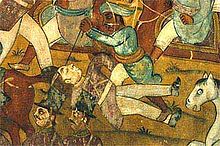
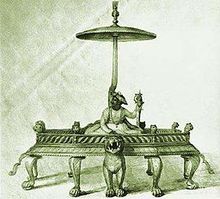


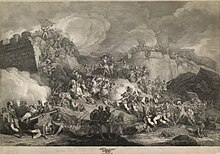



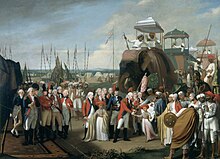
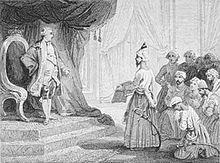
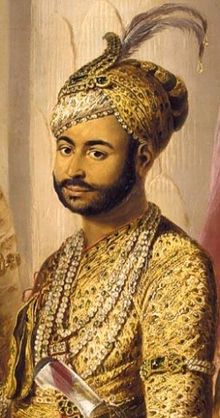









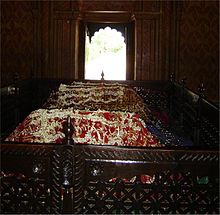
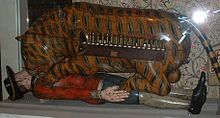

Comments
Post a Comment